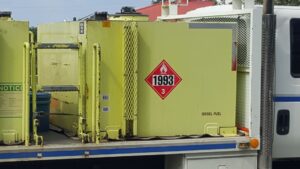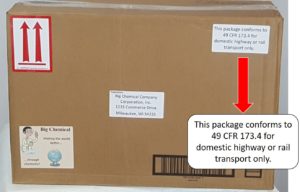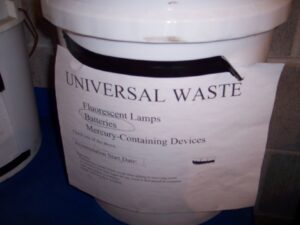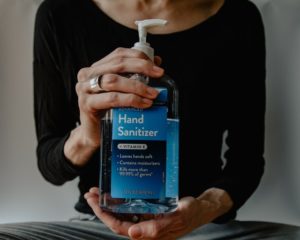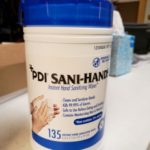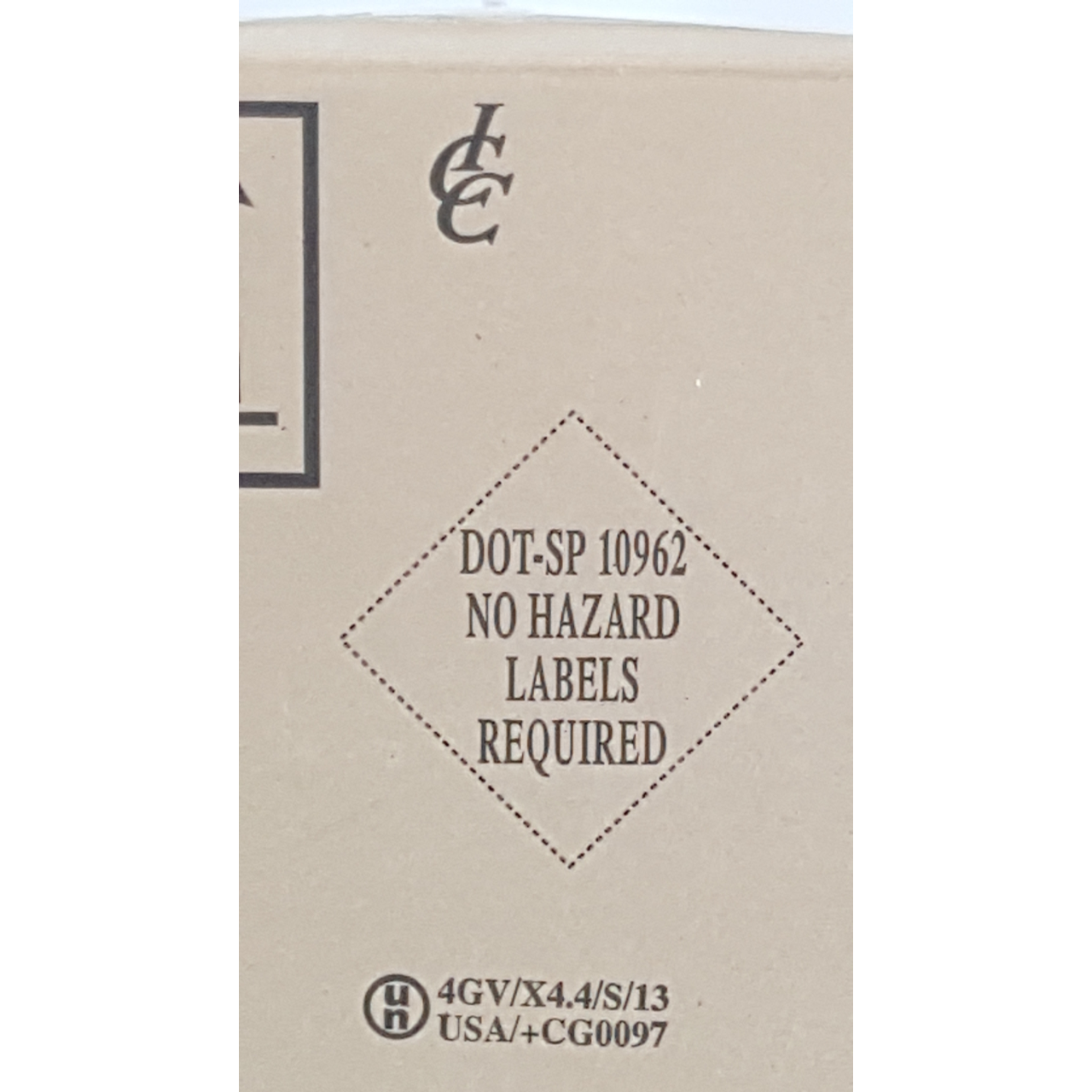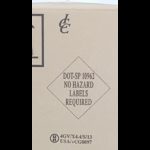Question (03.17.21):
Hi Daniel,
We have a customer who wants to ship empty containers to a container cleaning center. The totes and drums are empty and have been rinsed. Those containers had hazmat materials, can they cover up the labels and ship them ?
Regards,
Answer (03.17.21):
Thank you for contacting me. Please see below.
There are two options for the transport of these packagings in compliance with the Hazardous Materials Regulations (HMR) of USDOT/PHMSA:
Option 1: No Hazard
- The transportation of a packaging is not subject to the HMR under the following conditions:
- It is unused.
- It has been cleaned of residue and purged of vapor to remove any potential hazard.
- It has been refilled with non-HazMat so no hazard remains.
- Under any of the above conditions the packaging is excepted from the HMR and may be transported as non-HazMat if the following is done:
- All hazard communication (labels, marks, etc.) indicating the packaging contains a hazardous material are removed, obliterated, or securely covered.
Or…
- The packaging is not visible during its transportation and it is loaded by the shipper and unloaded by the receiver or shipper.
Like this article? Subscribe to my Monthly Newsletter No marketing emails! |
Option 2: The Empty Packaging Exception
- If any HazMat residue remains the packagings may still be transported under the empty packaging exception. Compliance with the empty packaging exception requires the following:
- It is a non-bulk packaging with a maximum capacity of no more than 450 L (119 gal).
- It meets the USEPA criteria for RCRA empty with no more than 2.5 cm (1 in) of residue.
- It is a HazMat found in Placard Table 2 at 49 CFR 172.504(e).
- Transportation is by a private or contract motor carrier. Transportation by a common carrier is not eligible for the full empty packaging exception.
- If the consignment is eligible for the full empty packaging exception, compliance requires the following:
- It is not required to display placards on the vehicle.
- It is not required for the shipper to prepare a shipping paper.
- Package marks and labels are required to be displayed on the packaging the same as if it is full.
- All other requirements of the HMR remain, e.g., HazMat Employee training.
- If the consignment is eligible only for the partial empty packaging exception, compliance requires the following:
- It is not required to display placards on the vehicle.
- The shipper must prepare and sign a shipping paper that describes the consignment as a hazardous material.
- Package marks and labels are required to be displayed on the packaging the same as if it is full.
- All other requirements of the HMR remain, e.g., HazMat Employee training.
Contact me with any questions you may have about the transportation of hazardous materials by air, highway, vessel, or rail International and Domestic |
You indicate the packagings are empty and have been rinsed. The question to be answered is this:
Have they been emptied and rinsed to remove any potential hazard?
- If yes, then the packagings may be offered for transportation as described in Option 1.
- If no, then either the full or partial empty packaging exception described in Option 2 is available.
I hope this helps. Please contact me with any other questions.
That did it!:
Hi Daniel,
Thanks for the information and the links, this really helps.


